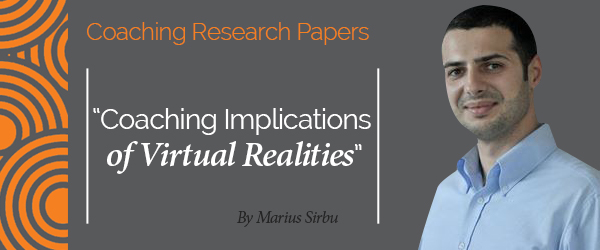Research Paper By Marius Sirbu
(Executive Coach, ROMANIA)
Designers and engineers of virtual realities have looked at how our mind perceives the external environment in order to offer users of VR (virtual reality) appropriate cues that make the computer-generated world look “real”. This paper proposes a look from the other perspective: What can we learn about the way we perceive the “real” world from our interaction with virtual realities?
This paper offers some reflections regarding what insights we can draw from our interaction with VR environments. In the same time, it explores the potentials of using the advances and increasing development of VR technologies in coaching.
Keywords: reality; virtual reality; truth, verisimilitude; perception.
The concept of VR
There is consensus regarding the fact that the term “virtual reality” was coined by Jaron Lanier1. As McLellan puts it,
Virtual reality (VR) can be defined as a class of computer-controlled multisensory communication technologies that allow more intuitive interactions with data and involve human senses in new ways.
Essentially, VR is a computer-created and simulated environment using virtual reality markup language. With appropriate equipment, often an elaborate computer-display headset, headphones, and sometimes carefully wired gloves, the sensations of virtual reality can be
genuine indeed; distinctions between the computer simulated and the authentic or real become matter of degree and perception.
What can we learn from our interaction with VRs?

